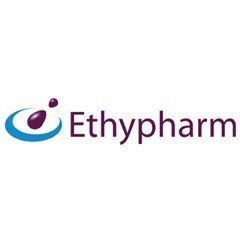2025年11月,由中华预防医学会风湿病预防专业委员会组织多学科专家,基于最新循证证据制订并发布《痛风抗炎症治疗指南 (2025版)》[1],发表在中国预防医学杂志11月刊。
此指南,是首部完全聚焦痛风抗炎症治疗的专项指南,其核心目标是构建痛风全程抗炎治疗框架,推动抗炎治疗规范化、标准化,为痛风管理的多个学科的医师提供可操作的临床决策工具,最终改善患者预后。
此指南遵循美国医学研究所 (Institution of Medicine, IOM) 关于指南的定义[2],按照世界卫生组织 (World Health Organization, WHO) 发布的《世界卫生组织指南制订手册》[3]及中华医学会发布的《中国制订/修订临床诊疗指南的指导原则 (2022版)》[4]进行,并依据指南评价工具 (appraisal of guidelines for research and evaluation, AGREE II)[5]的条目清单构建指南, 最终按照卫生保健实践指南的报告规范 (reporting items for practice guidelines in healthcare, RIGHT)[6]撰写指南全文, 指南工作组成员包括风湿免疫科、肾内科、消化内科、内分泌科、心内科、运动医学科、药理学、泌尿外科、指南方法学、循证医学等不同学科专家。其中患者小组包含3名痛风患者,从患者角度参与讨论并提供建议与观点,经过两轮德尔菲共识投票,12次专家讨论 (3次全体专家讨论+9次撰写组与证据组讨论),最终形成了这部国内外首次聚焦痛风抗炎症治疗的专项指南,质量等级较高。为此小编为大家整理核心内容如下。
一
指南核心治疗框架与关键推荐
核心治疗理念:“全程抗炎”+“评估-分层-决策”
指南打破“仅急性期抗炎”的传统模式,构建“急性期处理-长期预防-特殊人群管理”的全程抗炎体系,强调根据发作严重程度、合并症情况、药物耐受性进行分层决策,实现个体化治疗。
急性期抗炎症治疗 (核心推荐)
急性期治疗目标是快速控制关节红、肿、热、痛,推荐药物分为一线、二线及联合治疗方案:
一线药物:
秋水仙碱:36h内尽早应用 (12h内更优),推荐剂量为首次1.0mg,1h后0.5mg,12h后0.5mg/次、2~3次/d (1B),小剂量方案疗效与大剂量相当且更安全。
非甾体抗炎药 (NSAIDs):优先选用达峰时间更短的制剂 (2D),合并胃肠道出血风险者优先Cox-2选择性抑制剂 (1B)。
糖皮质激素:与秋水仙碱、NSAIDs疗效相当,推荐剂量≤0.5mg/kg/d (泼尼松当量),可选择口服、肌肉注射、静脉注射或关节腔内注射 (1B/2D),用药期间需监测血糖、血压 (2C)。
二线药物:
IL-1抑制剂 (伏欣奇拜单抗、卡那单抗等),用于一线药物禁忌、不耐受或效果不佳者 (1B)。
联合治疗:
适用于VAS评分≥7分、涉及≥2个大关节、多关节炎或单药疗效差的严重发作患者 (专家声明);
秋水仙碱+NSAIDs,或秋水仙碱+全身糖皮质激素 (必要时外用NSAIDs);
一线联合方案无效时,可选用IL-1抑制剂单用或联合一种一线药物。
长期抗炎症预防治疗
痛风石患者:需长疗程 (6~12个月) 抗炎治疗,推荐秋水仙碱或IL-1抑制剂,可降低痛风复发率、心血管不良事件及关节损伤风险 (2D/1C);
起始降尿酸治疗 (ULT) 患者:预防痛风发作首选0.5mg/d秋水仙碱 (1B);频繁发作的严重患者可增至1mg/d (专家声明);秋水仙碱禁忌/不耐受者,可选用IL-1抑制剂 (2B)、糖皮质激素 (2C),或NSAIDs (2D),预防疗程3~6个月。
特殊人群抗炎症治疗
指南对合并心血管疾病 (CVD)、消化系统疾病、慢性肾功能疾病 (CKD) 的患者给出明确分层推荐,是临床核心亮点:
合并严重的心血管疾病 (CVD):
首选秋水仙碱 (1B) 或IL-1抑制剂 (1B),两者具有心血管保护效应;
可考虑糖皮质激素 (2C),谨慎使用NSAIDs (2D),均需监测心血管不良事件。
合并严重的消化系统疾病:
合并腹泻/恶心/呕吐:优先IL-1抑制剂 (2B)或外用NSAIDs (2C),非必要不使用秋水仙碱、全身糖皮质激素或NSAIDs (2B/2C);
合并活动性/复发性消化性溃疡:可选用秋水仙碱 (专家声明)、IL-1抑制剂 (2B) 或外用NSAIDs (2C),不推荐全身糖皮质激素或NSAIDs (2B/2C);
合并肝功能损害:首选糖皮质激素 (2C)、IL-1抑制剂 (2B),使用秋水仙碱或NSAIDs需酌情减量并监测肝功能 (2B)。
合并CKD (按GFR分期推荐):
G1~G2期:可选秋水仙碱 (2C)、糖皮质激素 (2D)、IL-1抑制剂 (2C),可谨慎使用NSAIDs (监测肾脏不良反应) (2C);
G3期:首选糖皮质激素 (2D) 或IL-1抑制剂 (2C),秋水仙碱需减量使用 (2C),非必要不使用NSAIDs (2C);
G4~G5期/透析:首选糖皮质激素 (2D),可考虑IL-1抑制剂 (监测肾脏不良反应) (2C),禁用NSAIDs (2C);G4期可酌情减量使用秋水仙碱,G5期/透析患者禁用 (2C)。
二
基于此指南,非甾体抗炎药与糖皮质激素在急性痛风治疗的临床价值分析
非甾体抗炎药 (NSAIDs)
指南中的定位
NSAIDs属于“急性期一线用药”定位:指南推荐NSAIDs为痛风急性发作一线选择,优先达峰时间更短的制剂。根据国内指南[7],依托考昔、双氯芬酸的血药浓度达峰快,可快速缓解疼痛症状,契合“快速控症”需求,但依托考昔半衰期22小时,双氯芬酸半衰期2小时,临床需要根据需求合理使用。
Cox2选择性抑制剂是胃肠道高风险人群优选:指南明确合并胃肠道出血风险者,优先Cox-2选择性抑制剂,如依托考昔,塞来昔布等。
特殊人群的适配场景:
合并肝功能损害:指南允许使用NSAIDs (需减量监测)。
合并G1~G2期CKD:指南允许谨慎使用NSAIDs (监测肾脏不良反应)。
临床适用场景
痛风急性发作期 (尤其VAS评分较高、需快速控痛者);
合并轻度的胃肠道疾病、出血风险或老年患者的急性期抗炎首选Cox2抑制剂;
可作为秋水仙碱不耐受的一线替代治疗。
注意事项
禁忌人群:合并G3~G5期CKD患者 (指南非必要不使用/禁用NSAIDs);合并严重CVD (如缺血性心脏病、心力衰竭) 患者 (指南谨慎使用NSAIDs);
用药监测:需监测胃肠道反应 (恶心、腹痛)、肝肾功能及心血管状态;
联用禁忌:避免与其他NSAIDs或全身糖皮质激素联用,降低不良反应叠加风险;
疗程:一般急性痛风发作建议短期使用NSAIDs,如依托考昔 (120mg) 急性期使用不超过8天。
糖皮质激素
指南中的定位
急性期一线用药:指南明确糖皮质激素与秋水仙碱、NSAIDs疗效相当,为一线选择,以复方倍他米松为例,其抗炎作用强,可快速控制中重度急性发作;
剂量与给药途径符合推荐:指南推荐糖皮质激素剂量≤0.5mg/kg/d (泼尼松当量) (1B),例如60kg的患者,每日泼尼松用量为30mg,连续2-3天给药约60-90mg,根据等效剂量换算,复方倍他米松用药9-13.5mg (约1.3-1.9支)。另外,糖皮质激素的给药途径灵活 (口服、肌肉注射、静脉注射、关节腔内注射),如复方倍他米松等注射型激素,单次肌肉注射即可起效,作用持续时间长,减少给药频次,适配无法口服用药或需快速控症的患者;
特殊人群核心适配:
合并中重度CKD (G3~G5期):指南推荐优先使用糖皮质激素,激素无需经肾脏代谢调整剂量,是此类人群的核心抗炎选择;
可作为秋水仙碱、NSAIDs禁忌或不耐受患者的替代方案;
严重发作联合治疗:指南推荐秋水仙碱+全身糖皮质激素 (专家声明),激素可与秋水仙碱联用增强疗效。
临床适用场景
痛风急性发作期 (一线治疗或替代治疗);
严重发作 (VAS≥7分、多关节受累) 的联合治疗;
合并中重度CKD、秋水仙碱/NSAIDs禁忌或不耐受的患者;
单个大关节严重发作 (关节腔内注射)。
注意事项 (基于指南要求)
用药监测:必须监测血糖、血压,尤其合并糖尿病、高血压患者需及时调整基础疾病治疗方案;
禁忌与慎用:合并活动性/复发性消化性溃疡患者 (指南不推荐全身糖皮质激素);长期使用需警惕骨质疏松、感染等不良反应,急性期需短疗程使用,症状控制后及时停药;
关节腔内注射:需由经验丰富的医师操作,避免短期内重复注射;
联用禁忌:避免与口服NSAIDs联用,降低胃肠道、心血管不良反应风险。
三
总结
此指南以"循证为基础、精准分层抗炎"为核心理念,整合了近年来国内外多项余项高级别临床研究证据,涵盖风湿免疫科、内分泌科、肾内科、心血管科、骨科等多学科视角,针对痛风不同病程阶段及特殊人群的抗炎需求,构建了全周期、个体化的治疗体系。
此指南详细介绍了各种抗炎治疗药物的用药场景及合并病的应对方案,包括NSAIDs,秋水仙碱,糖皮质激素,并整合了IL-1抑制剂等生物制剂的疗效及安全性数据,明确其作为二线药物的适用场景,为难治性痛风提供解决方案。
此指南聚焦抗炎症治疗,重视抗炎治疗的全程个体化。然而,值得注意是的,目前对于痛风的全程治疗,国内外其他指南[7,8,9]大多还是聚焦于降尿酸治疗,因为只有真正的尿酸降低才能从根本上降低痛风急性发作。
附件:此指南推荐汇总[1]
临床问题1:对于痛风急性发作期的患者,积极抗炎症治疗的疗效与安全性如何?
推荐意见
对于痛风急性发作期患者,给予及时、规范和针对性的抗炎症治疗,可有效改善症状,安全性良好 (1C)。
临床问题2:对于痛风急性发作期的患者,秋水仙碱的启用时机和剂量如何?
推荐意见
推荐秋水仙碱在急性痛风发作36h内尽早应用 (专家声明),12h内应用更优 (1B)。
推荐秋水仙碱的使用方案为首次剂量1.0mg,1h 后再次服用0.5mg,12h之后则调整为0. 5 mg/次,2~3 次/d (1B)。
临床问题3:对于痛风急性发作期的患者,应用达峰时间更短的NSAIDs及其制剂的疗效与安全性是否更佳?与传统非选择性COX抑制剂相比,COX-2选择性抑制剂的疗效与安全性是否更佳?
推荐意见
建议使用达峰时间更短的NSAIDs及其制剂快速控制症状 (2D)。
对于伴有胃肠道出血风险的患者,谨慎使用NSAIDs,必要时可优先考虑COX-2选择性抑制剂 (1B)。
临床问题4:对于痛风急性发作期的患者,如何恰当使用糖皮质激素?
推荐意见
糖皮质激素与秋水仙碱、NSAIDs的疗效及安全性相当,可作为一线治疗用药 (1B)。
对于糖皮质激素剂量的选择,一般推荐每天≤0. 5 mg/kg (泼尼松当量) (1B)。
对于糖皮质激素用药途径,可根据个体情况选择口服 (1B)、肌肉注射 (1B)、静脉注射 (1B)或关节腔内注射 (2D)。
使用糖皮质激素时需监测患者的血糖与血压 (2C)。
临床问题5:对于痛风急性发作期的患者,如何恰当选择IL-1抑制剂?
推荐意见
对于一线抗炎症药物 (秋水仙碱、NSAIDs和糖皮质激素) 禁忌、不耐受或效果不佳,推荐使用IL-1 抑制剂进行治疗 (1B)。
临床问题6:对于严重发作的痛风急性发作期患者,如何恰当选择联合治疗方案?
推荐意见
对于VAS评分≥7分、涉及≥2个大关节、多关节炎或单药疗效差的急性痛风发作患者,可考虑联用两种不同类别的抗炎症药物 (专家声明)。
联合治疗方案可考虑秋水仙碱联合NSAIDs,或秋水仙碱联合全身糖皮质激素,必要时可在联合方案基础上于发作关节处外用NSAIDs (专家声明)。
若以上联用方案禁忌、不耐受或效果不佳,推荐IL-1抑制剂单用,或者IL-1抑制剂与秋水仙碱、NSAIDs或糖皮质激素中的一种联合使用 (专家声明)。
临床问题7:对于痛风石患者,长疗程抗炎症治疗是否有助于控制痛风复发,减少关节或脏器损伤?
推荐意见
对于痛风石患者,建议使用秋水仙碱或IL-1 抑制剂进行长疗程 (6~12 个月) 抗炎症治疗,可降低急性痛风复发率 (2D)。
秋水仙碱或IL-1抑制剂的长疗程使用可降低心血管不良事件的发生风险(1C)。
IL-1抑制剂 (1C) 或秋水仙碱 (专家声明) 的长疗程使用可降低关节损伤的发生风险。
临床问题8:对于起始ULT治疗的痛风患者,如何选择抗炎症药物预防痛风急性发作?
推荐意见
推荐使用0.5mg/d的秋水仙碱预防痛风发作 (1B)。
对于频繁发作的严重痛风患者,可考虑使用1mg/d 的秋水仙碱预防痛风发作 (专家声明)。
如存在秋水仙碱禁忌、不耐受或效果不佳,建议使用IL-1抑制剂 (2B) 或糖皮质激素 (2C)。
以上用药存在禁忌、不耐受或效果不佳,可考虑使用NSAIDs预防痛风发作 (2D)。
临床问题9:合并心血管疾病的痛风急性发作期患者,抗炎症治疗药物如何选择?
推荐意见
建议使用秋水仙碱 (1B) 或IL-1抑制剂 (1B)。
可考虑使用糖皮质激素,并监测心血管不良事件 (2C)。
谨慎使用NSAIDs,并监测心血管不良事件 (2D)。
临床问题10:合并消化系统疾病 (症状) 的痛风急性发作期患者,抗炎症治疗药物如何选择?
推荐意见
对于合并腹泻、恶心和/或呕吐的痛风急性发作期患者,积极治疗合并症的同时,建议IL-1抑制剂 (2B) 或外用NSAIDs (2C) 治疗;非必要不使用秋水仙碱 (2B)、糖皮质激素 (2B) 或NSAIDs全身用药 (2C);如累及单个大关节可考虑关节腔内注射糖皮质激素 (2D)。
对于合并活动性或复发性消化性溃疡的痛风急性发作期患者,积极治疗合并症的同时,可考虑使用秋水仙碱 (专家声明)、IL-1抑制剂 (2B) 或外用NSAIDs (2C) 进行治疗,不推荐糖皮质激素 (2B) 或NSAIDs全身用 (2C)。
对于合并肝功能损害的痛风急性发作期患者,积极治疗合并症的同时,建议首先选择糖皮质激素 (2C)、IL-1抑制剂 (2B),使用秋水仙碱 (2B) 或NSAIDs (2B) 时应酌情减量并密切监测肝功能。
临床问题11:对于合并CKD的痛风急性发作期患者,抗炎症治疗药物如何选择?
推荐意见
对于合并G1~G2期CKD的痛风急性发作期患者,建议选择秋水仙碱 (2C)、糖皮质激素 (2D) 或IL-1 抑制剂 (2C),可考虑选择NSAIDs (2C),使用时需监测肾脏不良反应。
对于合并G3期CKD的痛风急性发作期患者,建议选择糖皮质激素 (2D),或IL-1抑制剂 (2C);可考虑使用秋水仙碱 (2C),酌情降低剂量,并密切监测不良反应;非必要不使用NSAIDs (2C)。
对于合并G4~G5期CKD的痛风急性发作期患者,建议使用糖皮质激素 (2D);可考虑使用IL-1抑制剂 (2C),使用时需监测肾脏不良反应;禁用NSAIDs (2C)。对于合并G4期CKD的患者,在无其他选择的情况下,可根据肾功能酌情减量使用秋水仙碱;G5期CKD或已透析患者禁用秋水仙碱 (2C)。
- 参考文献(上下滑动查看) -
1. 中华预防医学会风湿病预防专业委员会, 痛风抗炎症治疗指南 (2025版)[J]. 中国预防医学杂志, 2025, 26(11): 1302-1328.
2. Kung J, Miller RR, Mackowiak PA. Failure of clinical practice guidelines to meet institute of medicine standards two more decades of little, If any, progress[J]. Arch Intern Med, 2012,172 (21): 1628-1633. DOI:10.1001/2013.jamainternmed.56
3. World Health Organization. WHO Handbook for Guideline Development 2nd edition[J]. 2014, Geneva: WHO Press, 2014.
4. 陈耀龙, 杨克虎, 王小钦, 等. 中国制订/修订临床诊疗指南的指导原则 (2022版)[J]. 中华医学杂志, 2022,102 (10): 697-703. DOI:10.3760/cma.j.cn112137-20211228-02911
5. Brouwers MC, Kho ME, Browman GP, et al. AGREE II: advancing guideline development, reporting and evaluation in health care [J]. CMAJ, 2010, 182 (18): E839-E842. DOI:10.1503/cmaj.090449.
6. Chen YL,Yang KH,Marusic A,et al. A reporting tool for practice guidelines in health care:the RIGHT Statement [J]. Ann Intern Med, 2017, 166 (2): 132. DOI: 10.7326/M16-1565.
7. 徐东, 朱小霞, 邹和建, 林禾, 赵岩. 痛风诊疗规范[J]. 中华内科杂志, 2023, 62(9): 1068-1076. DOI:10.3760/cma.j.cn112138-20221027-00796.
8. 中华医学会内分泌学分会. 中国高尿酸血症与痛风诊疗指南(2024)第一部分: 对一般痛风患者的建议[J]. 中华内分泌代谢杂志, 2025, 41(10): 806-817. DOI:10.3760/cma.j.cn311282-20250806-00392.
9. FitzGerald, J. D., Dalbeth, N., Mikuls, T., Brignardello-Petersen, R., Guyatt, G., Abeles, A. M., Gelber, A. C., Harrold, L. R., Khanna, D., King, C., Levy, G., Libbey, C., Mount, D., Pillinger, M. H., Rosenthal, A., Singh, J. A., Sims, J. E., Smith, B. J., Wenger, N. S., Bae, S. S., … Neogi, T. (2020). 2020 American College of Rheumatology Guideline for the Management of Gout. Arthritis care & research, 72(6), 744–760. https://doi.org/10.1002/acr.24180
▼ 往期精彩回顾
▼
逆转痛风石,这几点你要清楚!
痛风:隐匿于日常生活的健康“暗礁”
痛风:为何尿酸下降了,关节还是会痛?
俞烜华
副主任医师、硕导
风湿病专科门诊:周二全天、周三上午
诊室:1号楼2楼内科215诊室
高尿酸血症、痛风专病门诊:每周五上午
诊室:7号楼3楼305诊室
你与世界
只差一个
公众号
















